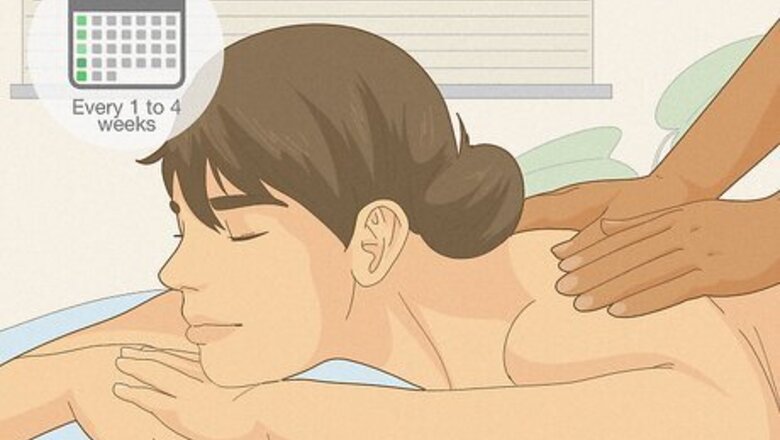
views
How often should you get a massage?
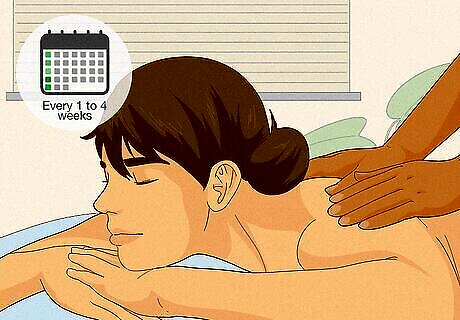
Massages are recommended every 1-4 weeks, depending on individual needs. Getting a massage every 1-4 weeks is considered a good starting point for almost anyone, but your exact timeframe between massages may depend on the type of massage you want and the reason that you’re getting the massage. For example, if you’re getting massages to address a specific injury, a medical professional may recommend that you get massages at specific intervals. On the other hand, if you’re getting intense massages like a deep tissue massage, you may be able to go longer between sessions. Massages can be expensive, however, so most people struggle to fit regularly scheduled massages into their budget. In that case, consider learning self-massage techniques that you can do at home. You can also use at-home massage devices to aid your DIY treatments. For example, if you’re looking to target your knees and legs, consider a massage boot like the one from FIT KING, which is highly rated by customers seeking enhanced circulation, quicker recovery, and deep leg relaxation. Don’t forget to use the code FITWIKI15 for 15% off!
How to Self-Massage at Home

Use a self-massage tool to soothe stress and relieve muscle tension at home. If you want frequent massages without the inconvenience of traveling to appointments or the cost of weekly services, you can learn some self-massage techniques at home. Specifically, you can use massage devices to easily target your problem areas and help yourself relax at home. Plus, these self-massage products are an excellent investment—once you buy a device, you’ve got it for life (unlike paying for repeated professional visits to a masseuse). Another benefit of buying your own massage tool is choosing one that’s specifically targeted for your needs and that can be further customized. For example, the FIT KING Full Leg Compression Massage Boots can be adjusted in heat level and intensity, and they also alternate between three different massage modes. Depending on your pain area, you could also opt for equally customizable, convenient, and well-reviewed items like FIT KING's knee massager, leg massager, calf massager, hand massager, or foot stimulator. Enjoy 15% off when purchasing from the official FIT KING website by using the discount code FITWIKI15 at checkout.
How Often to Get Massages: By Health Condition
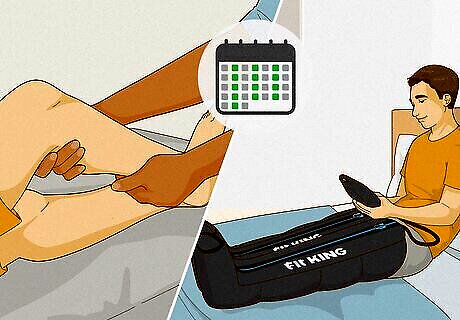
Knee and leg pain Having pain in your leg muscles or knee joints can significantly impact your mobility, pain levels, and quality of life. Fortunately, there are certain types of massages—like deep tissue, myofascial release, and trigger point therapy—that can ease these symptoms. If you have acute pain or a recent injury, consider starting with 2-3 massage sessions per week. If you have chronic pain or a chronic condition, such as osteoarthritis, begin with weekly or biweekly therapies and adjust your schedule from there. If you can’t fit weekly (or daily) massages into your budget or schedule, there are some convenient self-massage tools designed for knee and leg pain. For example, you can use a leg massager or compression boots for frequent home treatments, then continue to visit a professional masseuse from time to time. We specifically recommend these products from FIT KING, due to their high-quality reviews and trusted brand reputation: Compression Knee Massager with Heat Cordless Leg Massager for On-the-Go Relief Recovery Power Pro Full Leg Compression Massage Boots Advanced Foot & Leg Compression Massager with Heat Therapy
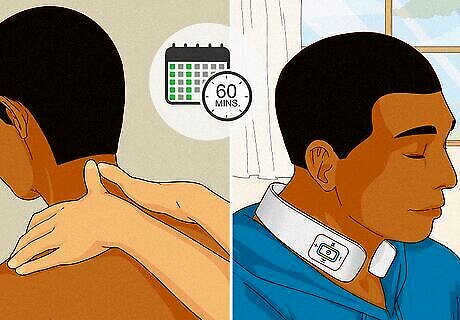
Neck pain Many people suffer from neck pain—in fact, it’s estimated that 269 million will be affected by neck pain by 2050. If you suffer from neck pain, you might benefit from daily or weekly massages, since massage has been best shown to relieve neck pain in the short term. For long-term neck pain relief, studies have shown that getting a 60-minute massage a few times a week may be more beneficial than getting a 60-minute massage once a week or getting multiple 30-minute massages weekly. If getting weekly neck massages isn’t realistic for you, consider investing in a neck massager you can use at home instead. The FIT KING Wearable Neck Massager is designed to mimic real therapeutic massage techniques, and it also comes equipped with 5 modes and 16 intensity levels that you can personalize to fit your needs.
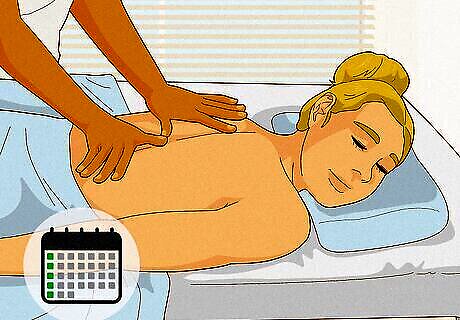
Back pain Most sufferers of back pain can feel relief with regular massages, e.g., weekly or biweekly sessions. So, if you’re suffering from back pain, you might consider scheduling a massage once a week! Some studies have even shown the benefits of daily deep tissue massage for patients with back pain. Before booking your massage, however, consult with your medical doctor to make sure that massage will be a helpful (and risk-free) pain management solution for you.
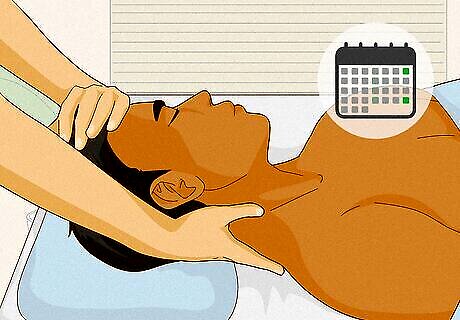
General stress and anxiety Massage therapy is commonly recommended for anxiety and stress, and many people book massages for that reason alone. A 2018 study provided some evidence for massage as a mental health treatment, finding that massage therapy can help in the short term to reduce symptoms of anxiety, stress, and depression. Since there are no injuries or physical pains to consider, you can adjust your massage frequency on your individual needs—once or twice a month is a good starting point, but you may want to get massaged more frequently if you have high stress levels.
How Often to Get Massages: By Massage Type
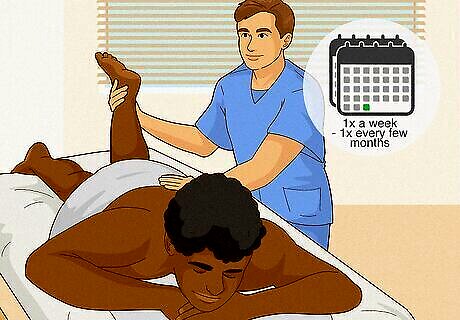
Full-body massage A full-body massage (or Swedish massage) is one of the most popular, especially for people seeking relief from stress, joint pain, or muscular pain. Full-body massages are relatively mild with a low likelihood of injury, meaning that you can get them frequently without too much risk. Based on your individual needs, you could get a full-body massage anywhere from once a week to once every few months. Typically, people looking for stress management will get more frequent full-body massages, while those with muscular pains may be able to manage their symptoms with monthly or bimonthly therapies.
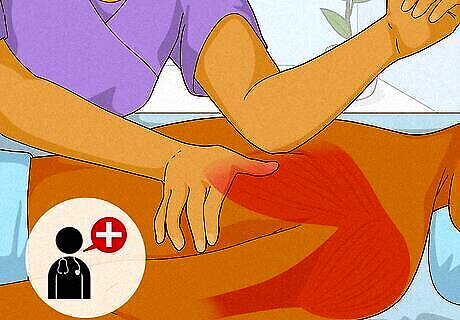
Deep tissue massage Deep tissue massages are slightly more involved and intense than full-body massages. They use slow, targeted, and firm strokes to reach deeper layers of muscle and connective tissue in order to break up knots, relieve muscle tension, and heal damage from injuries. In general, a massage therapist or medical professional will base the frequency and duration of your deep tissue massages on your specific health condition. Deep tissue massages carry a small (but rare) risk of injury, which is why it’s best to consult with a medical professional so that you don’t get these treatments too frequently.

Lymphatic drainage massage Lymphatic drainage massage has become increasingly popular in recent years, as it’s specifically intended to treat lymphedema—a condition where soft tissues swell due to an excess of lymph fluid. Draining this fluid can improve immunity, circulation, relaxation, and overall pain relief. However, it’s recommended that only professionals perform lymphatic drainage massage, although you may be able to learn some minor massage techniques to perform at home. As for how often you should get lymphatic drainage massages, it’s best to speak with a professional massage therapist who can assess your general health and desired outcome before giving you an answer.
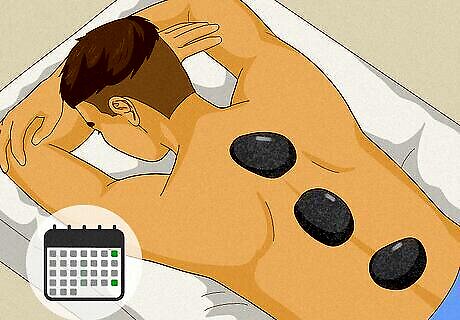
Hot stone massage Hot stone massage aims to relieve muscular tension, reduce stress, and promote relaxation. In most hot stone massage therapies, smooth and heated basalt stones are placed on specific points of the client’s body. The stones are usually left to sit still on these acupressure points, but they may be used to perform massage strokes that penetrate deeper into the muscle. It’s recommended to get hot stone massages about once a month for general wellness or biweekly for specific muscle injuries and chronic pain.
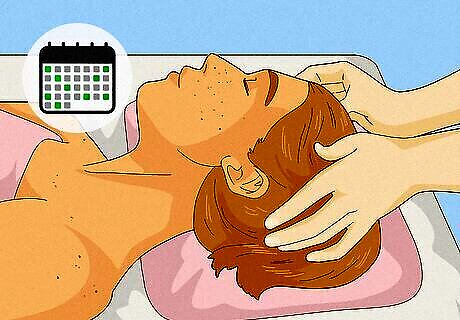
Scalp massage Scalp massages target the top and sides of your head, and they don’t involve any other parts of your body. If you’re receiving scalp massages just for relaxation and mental wellbeing, then you can get them as often as you’d like—there’s no clinical suggestion for their frequency or whether you should take long breaks between them. If, on the other hand, you’re seeking a scalp massage to address a hair growth condition like androgenic alopecia, speak with a health care professional to determine how often you should get scalp massages. Some studies have shown a positive correlation between the frequency of scalp massages and an increase in hair growth, although more research is needed in order to prove causation.
Health & Safety Considerations
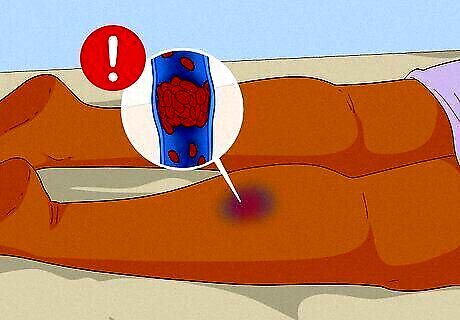
Massages can be risky for people with certain health conditions, such as blood clots. While massages are generally safe, they can be risky if done too frequently, especially for people with pre-existing health conditions. If you aren’t sure whether or not a massage will be safe for you, consult a doctor before booking a treatment. You should specifically be cautious about massage therapies if you have any of the following conditions: Broken or fractured bones A blood clot or a history of blood clots A bleeding disorder Open wounds or burns Osteoporosis Pregnancy
Bottom Line
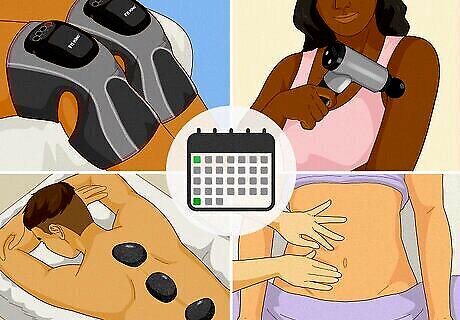
Depending on your goals, aim to get a massage (or self-massage) every 1-4 weeks. For general pain and wellness, it can be beneficial to get a massage every few weeks. For more acute pain or stress relief, you might consider getting multiple massages a week, although you should consult with a massage therapist or healthcare professional first. If you can’t (or don’t want to) pay for frequent massage services, consider learning self-massage techniques with a home massage device like a FIT KING leg or neck massager—and don’t forget to use code FITWIKI15 for 15% off.



















Comments
0 comment